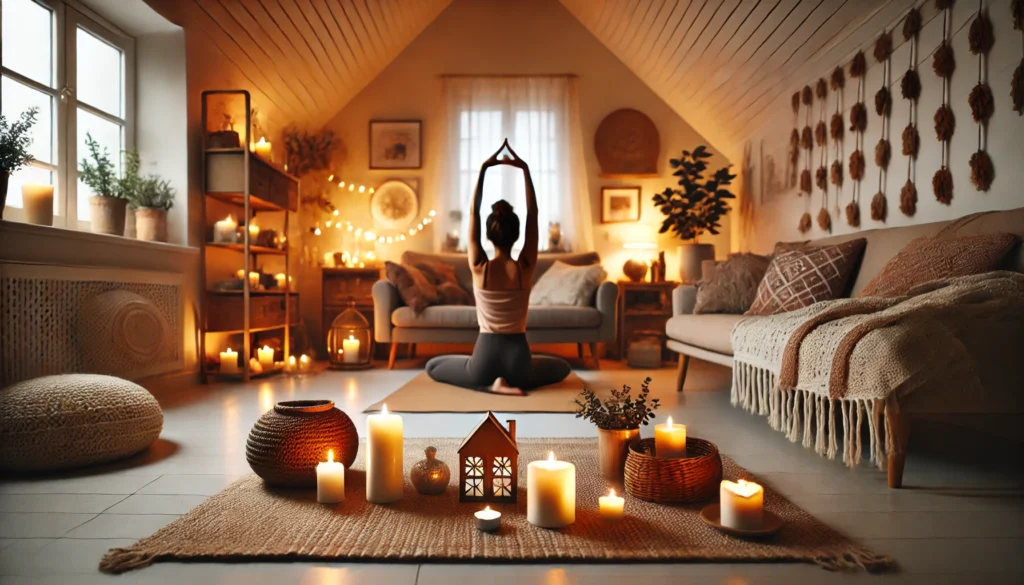Systematic relaxation techniques have garnered significant attention in recent years, as individuals seek effective ways to alleviate stress and tension. From the ancient practices of meditation and yoga to modern-day therapies, the benefits of these techniques are both profound and scientifically supported. This article delves into the realm of systematic relaxation, exploring various methods and their impacts on both the body and mind.
You may also like: Effective Stress Management Techniques for Daily Life
Understanding Systematic Relaxation
Systematic relaxation refers to a structured approach to reducing tension and stress in the body through various exercises and mental practices. These techniques are designed to engage both the mind and body in a harmonious manner, promoting a state of calmness and tranquility. The cornerstone of systematic relaxation lies in its ability to target muscle tension, a common symptom of anxiety and stress.
The Mind-Body Connection
The mind-body connection plays a crucial role in systematic relaxation techniques. Stress often manifests as physical symptoms, such as headaches or muscle tension. By addressing both mental and physical aspects, systematic relaxation helps alleviate these symptoms, promoting overall well-being.
Regular practice of these techniques can lead to a more balanced emotional state. It encourages mindfulness and self-awareness, allowing individuals to better manage their reactions to stressors. Over time, this can result in a more resilient mindset.
The Science Behind Muscle Tension and Relaxation
Muscle tension is often a physiological response to stress, where the body instinctively prepares to fight or flee from perceived threats. This response, while beneficial in acute situations, can become detrimental when prolonged, leading to chronic pain and discomfort. Systematic relaxation techniques aim to interrupt this cycle by encouraging a state of deep relaxation, thus reducing muscle tension and promoting overall well-being.
When muscle tension is reduced, blood flow improves, delivering more oxygen and nutrients to tissues. This not only enhances physical health but also supports cognitive function. Improved circulation can lead to clearer thinking and better decision-making abilities.
Psychological Benefits of Systematic Relaxation
Beyond physical relaxation, these techniques offer significant psychological benefits. They can reduce symptoms of anxiety and depression by encouraging the production of endorphins, the body’s natural mood elevators.
Systematic relaxation also promotes better sleep patterns. As the body becomes accustomed to relaxation, it becomes easier to transition into restful sleep, enhancing overall quality of life. Furthermore, these practices can enhance focus and concentration, leading to improved productivity.
Exploring Progressive Muscle Relaxation
One of the most effective systematic relaxation techniques is Progressive Muscle Relaxation (PMR). Developed by Dr. Edmund Jacobson in the 1920s, PMR involves the sequential tensing and relaxing of various muscle groups throughout the body. By consciously focusing on each group, individuals learn to identify and release tension, fostering a heightened awareness of bodily sensations.
The Origins and Development of PMR
Progressive Muscle Relaxation has its roots in the early 20th century. Dr. Jacobson’s research was pioneering in its understanding of the relationship between muscle tension and mental stress. His work laid the foundation for a technique that has been refined and adapted over the decades.
Today, PMR is widely used by therapists and individuals alike. It serves as a cornerstone of stress management programs and is particularly effective in clinical settings for managing anxiety disorders and chronic pain.
How to Practice Progressive Muscle Relaxation
To begin PMR, find a comfortable and quiet space where you can sit or lie down without interruptions. Start by taking slow, deep breaths to center your mind and body. Begin with your toes, tensing the muscles for a few seconds, then releasing the tension while focusing on the sensation of relaxation. Gradually work your way up the body, from your legs to your abdomen, chest, arms, and finally, your face.
It’s important to maintain a steady rhythm of breathing throughout the process. Deep breathing enhances the relaxation response, making each muscle release more effective. Visualization can also be incorporated, imagining stress leaving the body with each exhale.

Benefits of Progressive Muscle Relaxation
The benefits of PMR are multifaceted. Not only does it help reduce muscle tension, but it also enhances mental clarity and emotional stability. Regular practice of PMR has been shown to lower blood pressure, improve sleep quality, and even boost immune function. As a holistic approach, PMR serves as an effective tool for managing anxiety and stress-related disorders.
PMR can also enhance self-awareness. By focusing on individual muscle groups, practitioners become more attuned to their body’s signals, learning to recognize early signs of stress. This awareness can lead to proactive stress management, preventing issues before they escalate.
Furthermore, PMR’s accessibility is a significant advantage. It requires no special equipment and can be practiced virtually anywhere, making it an ideal technique for busy individuals seeking quick relief from stress.
Deep Muscle Relaxation Therapy
Deep muscle relaxation therapy takes the principles of PMR a step further by incorporating guided imagery and mindfulness techniques. This therapy is often facilitated by a trained practitioner who guides individuals through a series of visualizations and breathing exercises, promoting a deeper state of relaxation.
The Role of Guided Imagery
Guided imagery is a powerful component of deep muscle relaxation therapy. It involves creating vivid mental images that evoke a sense of peace and tranquility. By visualizing calming scenes, such as a serene beach or a peaceful forest, individuals can transport their minds away from stressors.
This technique engages multiple senses, enhancing the relaxation experience. For example, imagining the sound of waves or the scent of pine trees can deepen the sense of immersion, making the relaxation more profound.
How Deep Muscle Relaxation Therapy Works
During a session, individuals are encouraged to visualize calming scenes, such as a serene beach or a peaceful forest. By engaging the mind in positive imagery, the body responds by releasing tension and stress. This synergy between mind and body fosters a profound sense of relaxation and rejuvenation.
Mindfulness is another key element. By focusing on the present moment and letting go of distractions, individuals can achieve a deeper state of relaxation. This practice encourages a mindful awareness of bodily sensations, further enhancing the therapy’s effectiveness.
The Benefits of Deep Muscle Relaxation Therapy
Deep muscle relaxation therapy can lead to significant improvements in mental health. It is particularly effective in reducing symptoms of anxiety and depression by promoting a state of calm and balance.
This therapy also supports physical health. By reducing chronic muscle tension, it can alleviate pain and improve flexibility. As a result, individuals may experience enhanced physical performance and reduced risk of injury.
Additionally, deep muscle relaxation therapy can improve emotional regulation. By fostering a sense of inner peace, it helps individuals manage emotional responses more effectively, leading to healthier relationships and interactions.
The Role of Technology in Muscle Relaxation Training
In today’s digital age, technology has become an integral part of muscle relaxation training. Apps and wearable devices offer guided relaxation sessions, biofeedback, and real-time monitoring of physiological responses. These tools empower individuals to take charge of their relaxation journey, providing personalized insights and recommendations.
Innovations in Relaxation Technology
The development of relaxation apps has revolutionized how individuals approach stress management. These applications offer a wide range of guided sessions, catering to different needs and preferences. From short meditations to in-depth relaxation routines, there is something for everyone.
Wearable devices have also made a significant impact. By tracking physiological data such as heart rate and breathing patterns, these devices provide valuable insights into the body’s stress response. This information can help users tailor their relaxation practices for maximum effectiveness.
Benefits of Using Technology for Relaxation
The integration of technology in relaxation training offers numerous benefits. It provides accessibility to relaxation techniques anytime and anywhere, ensuring that individuals can practice at their convenience. Additionally, data-driven insights allow for a tailored approach, optimizing relaxation practices to suit individual needs.
Technology also facilitates consistency, a key component of effective relaxation. Reminders and notifications can prompt users to practice regularly, helping to establish a routine. Over time, this can lead to lasting improvements in stress management and overall well-being.
Furthermore, technology fosters community and support. Many relaxation apps offer forums and groups where users can share experiences and tips, creating a supportive environment that enhances motivation and engagement.
The Future of Relaxation Technology
As technology continues to advance, the future of relaxation training looks promising. Innovations such as virtual reality and artificial intelligence have the potential to create even more immersive and personalized relaxation experiences.
Virtual reality, for example, can transport users to serene environments, enhancing the sensory experience of relaxation. AI can analyze user data to provide customized recommendations, optimizing practices for individual needs.
These advancements hold the potential to make relaxation techniques more effective and accessible, supporting mental and physical health on a broader scale.
Practical Tips for Incorporating Relaxation Techniques into Daily Life
Incorporating systematic relaxation techniques into daily life requires commitment and consistency. Here are some practical tips to help you get started:
Establishing a Relaxation Routine
Set a specific time each day for relaxation practice. Consistency is key to reaping the benefits of these techniques. Consider scheduling relaxation sessions at the same time each day, such as in the morning or before bed, to make it a habit.
Keep a journal to track your progress and experiences. Reflecting on your practice can help you identify patterns and make adjustments as needed. This self-awareness can enhance the effectiveness of your relaxation routine.

Creating a Relaxing Environment
Choose a quiet and comfortable space free from distractions. Consider using calming music or aromatherapy to enhance the experience. Soft lighting and comfortable seating can also create a conducive environment for relaxation.
Personalize your space with items that promote peace and tranquility. This could include plants, soothing artwork, or a cozy blanket. Creating an inviting atmosphere can make it easier to relax and unwind.
Starting Small and Building Up
Begin with short sessions of 5-10 minutes and gradually increase the duration as you become more comfortable with the techniques. Starting small makes the practice more manageable and less overwhelming.
As you progress, explore new techniques and variations. Experimenting with different methods can keep your practice engaging and prevent it from becoming monotonous. Variety can also help you discover what works best for your unique needs.
Practicing Mindfulness
Incorporate mindfulness into your relaxation routine by focusing on your breath and bodily sensations. Mindfulness can enhance the effectiveness of relaxation techniques by promoting a deeper connection with the present moment.
Regular mindfulness practice can lead to greater emotional resilience and improved stress management. Over time, this can result in a more balanced and fulfilling life.
Exploring Different Techniques
Experiment with various relaxation techniques to find what works best for you. Whether it’s PMR, deep muscle relaxation therapy, or guided imagery, the key is to find a method that resonates with you.
Stay open to trying new approaches. As your needs and circumstances change, different techniques may become more relevant. Flexibility and adaptability are essential for maintaining an effective relaxation practice.
Future Implications of Systematic Relaxation
As the understanding of systematic relaxation techniques continues to evolve, future implications are promising. Research into the neurophysiological effects of these practices could lead to innovative therapies for stress-related disorders. Additionally, the integration of technology in relaxation training is poised to revolutionize the way individuals approach mental and physical well-being.
Advances in Scientific Research
Ongoing research is shedding light on the complex interactions between relaxation techniques and the brain. These studies are uncovering the mechanisms through which relaxation influences neural pathways, potentially leading to targeted interventions for mental health disorders.
Collaborations between neuroscientists and practitioners are paving the way for evidence-based approaches to relaxation. This integration of science and practice holds the promise of more effective and personalized therapies.
The Growing Role of Technology
As technology evolves, its role in relaxation training is likely to expand. Innovations in artificial intelligence and machine learning could lead to more sophisticated tools for monitoring and enhancing relaxation practices.
The potential for virtual and augmented reality to create immersive relaxation experiences is particularly exciting. These technologies could transport users to calming environments, offering a new dimension of relaxation that engages all the senses.

The Potential for Broader Impact
The widespread adoption of systematic relaxation techniques could have a significant impact on public health. By reducing stress and promoting mental well-being, these practices have the potential to improve quality of life on a large scale.
As more individuals embrace these techniques, there is also the possibility of a cultural shift towards greater mindfulness and self-care. This could lead to a more compassionate and resilient society, better equipped to handle the challenges of modern life.
In conclusion, systematic relaxation techniques offer a comprehensive approach to reducing muscle tension and stress. By embracing these practices, individuals can achieve a state of balance and harmony, enhancing both mental and physical health. As we move forward, the potential of these techniques to transform lives remains vast and exciting.
Further Reading:
Systematic relaxation to relieve postoperative pain
Progressive Muscle Relaxation Meditation
Everything You Need To Know About Progressive Muscle Relaxation
Important Note: The information contained in this article is for general informational purposes only, and should not be construed as health or medical advice, nor is it intended to diagnose, prevent, treat, or cure any disease or health condition. Before embarking on any diet, fitness regimen, or program of nutritional supplementation, it is advisable to consult your healthcare professional in order to determine its safety and probable efficacy in terms of your individual state of health.
Regarding Nutritional Supplements Or Other Non-Prescription Health Products: If any nutritional supplements or other non-prescription health products are mentioned in the foregoing article, any claims or statements made about them have not been evaluated by the U.S. Food and Drug Administration, and such nutritional supplements or other health products are not intended to diagnose, treat, cure, or prevent any disease.


